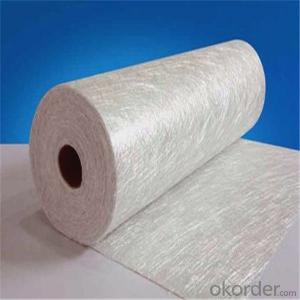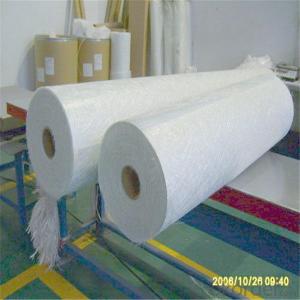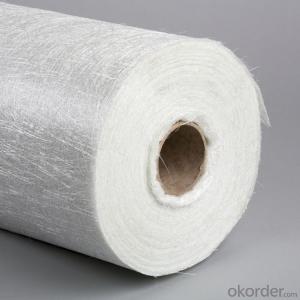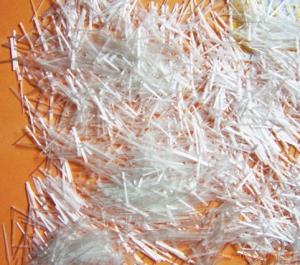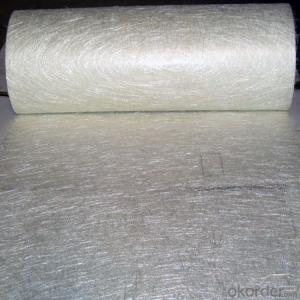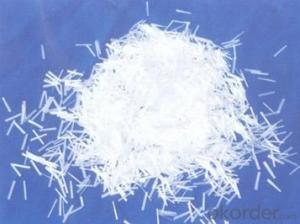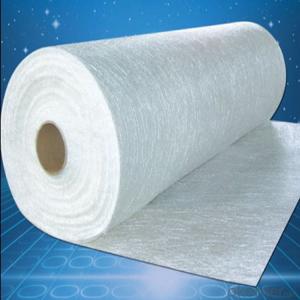China E-glassFiberglass Chopped Stand Mat
- Loading Port:
- Tianjin
- Payment Terms:
- TT OR LC
- Min Order Qty:
- 100 m.t.
- Supply Capability:
- 20000 m.t./month
OKorder Service Pledge
Quality Product, Order Online Tracking, Timely Delivery
OKorder Financial Service
Credit Rating, Credit Services, Credit Purchasing
You Might Also Like
Quick Details
| Technique: | Chopped Strand Fiberglass Mat (CSM) | Dimensions: | 450gsm | Mat Type: | Continuous Filament Mat |
| Fiberglass Type: | E-Glass | Softness: | softness | Place of Origin: | Jiangxi, China (Mainland) |
| Brand Name: | cnbm | Model Number: | 450gsm | color: | white |
| fiberglass type: | E glass | product: | e-glass powder chopped stand mats | binder: | powder or emulsion |
| width: | 1040 or 1270mm, as your requirement | weight: | 30 or 45kg/roll | paper tube diameter: | 90mm |
| outer diameter of roll: | 256mm | packing: | plastic film+carton box + pallet |
Packaging & Delivery
| Packaging Details: | plastic film+carton box + pallet |
| Delivery Detail: | 15-20days |
Specifications
1.e-glass powder chopped stand mats
2.binder:power or emulsion
3.width:1040mm or 1270mm
4.weight:450gsm
Picture
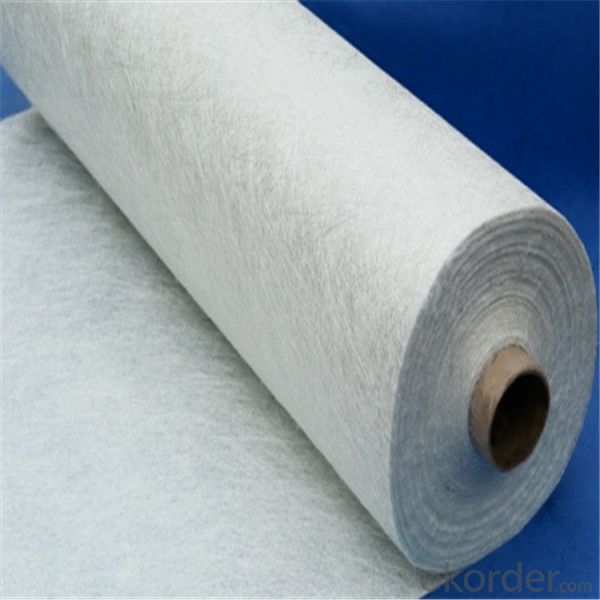
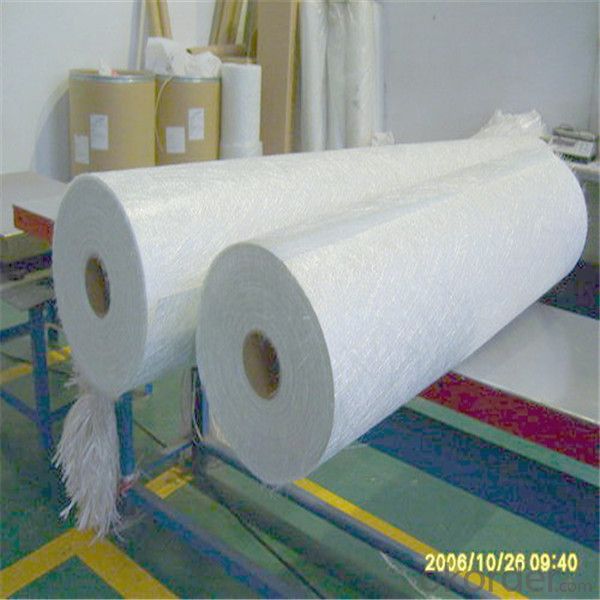
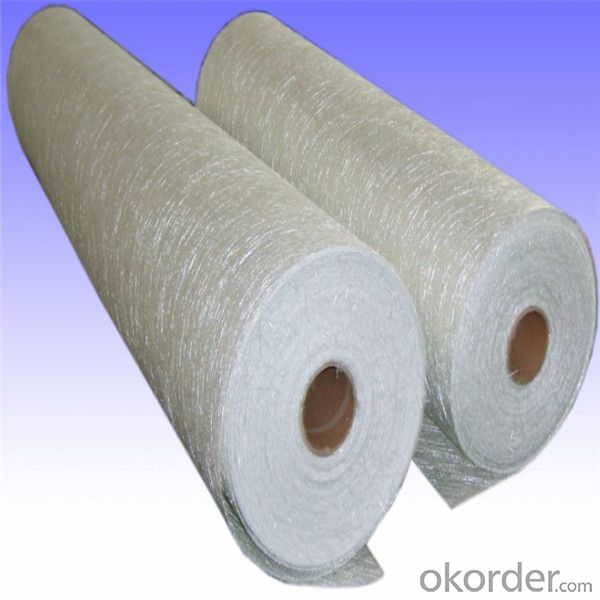
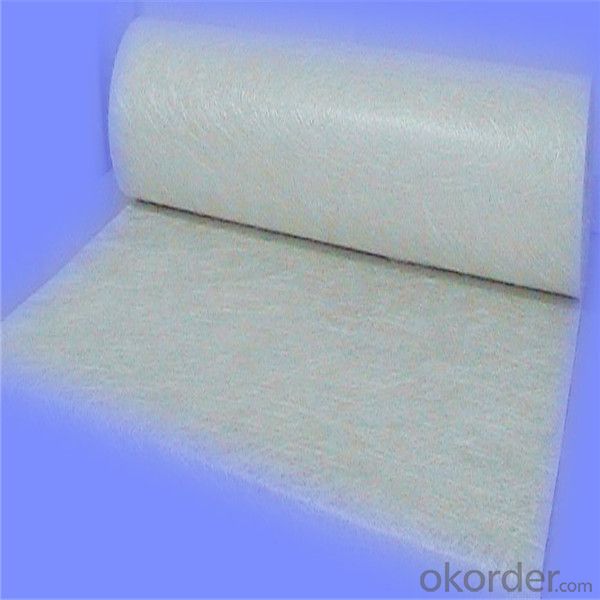
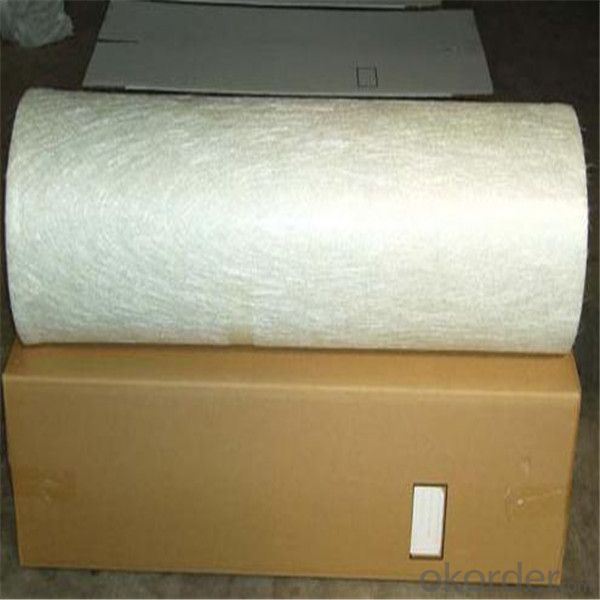
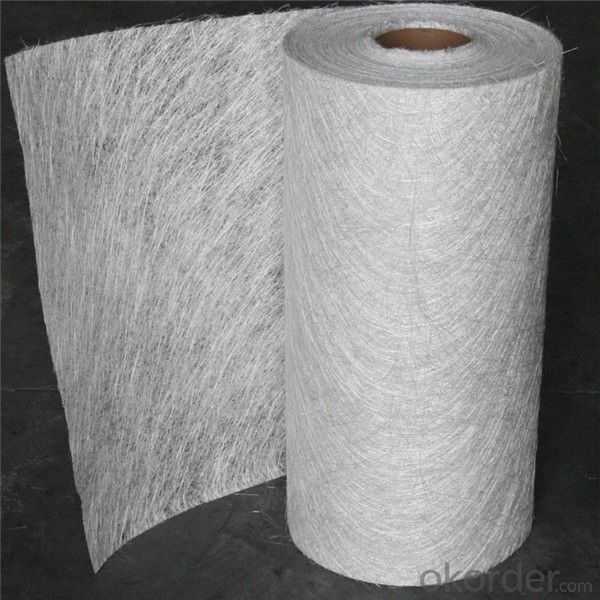
- Q:How is fiberglass chopped strand incorporated into products?
- Fiberglass chopped strand is commonly incorporated into products by mixing it with a resin or adhesive, and then applying it to a surface or molding it into a desired shape. The chopped strands provide reinforcement and strength to the final product, making it more durable and resistant to damage.
- Q:How does the fiber dispersion affect the processing time of chopped strand composites?
- Fiber dispersion significantly affects the processing time of chopped strand composites. Inadequate dispersion of fibers can lead to the formation of fiber clusters or agglomerates, which hinders the flow of resin during processing. This results in longer processing times as the resin needs to penetrate and surround the fiber clusters, leading to incomplete wetting and poor interfacial bonding. On the other hand, well-dispersed fibers allow for efficient resin impregnation, leading to faster processing times and better overall composite properties.
- Q:Can fiberglass chopped strand be used in the production of sporting goods?
- Yes, fiberglass chopped strand can be used in the production of sporting goods. It is commonly used in the manufacturing of sporting equipment such as hockey sticks, surfboards, and skis due to its high strength and lightweight properties.
- Q:Can fiberglass chopped strand be used in chemical resistant applications?
- No, fiberglass chopped strand is not typically used in chemical resistant applications. While fiberglass is known for its strength and durability, it is not inherently resistant to many chemicals. In applications where resistance to chemicals is required, other materials such as specialty resins or coatings that are designed to withstand specific chemicals are typically used instead. These materials provide a higher level of chemical resistance and protect against corrosion or degradation caused by exposure to harmful substances. Therefore, it is recommended to consider alternative materials that are specifically formulated to meet the chemical resistance requirements of the application.
- Q:Can fiberglass chopped strand be used in the manufacturing of sports equipment?
- Yes, fiberglass chopped strand can be used in the manufacturing of sports equipment. Fiberglass chopped strand is a versatile material that offers several advantages for sports equipment manufacturing. Firstly, fiberglass chopped strand is lightweight, which is a desirable characteristic for sports equipment as it allows for ease of use and maneuverability. Whether it's for tennis rackets, golf clubs, or hockey sticks, the lightweight nature of fiberglass chopped strand ensures that the equipment is not cumbersome and helps optimize performance. Secondly, fiberglass chopped strand offers excellent strength and durability. Sports equipment is subjected to significant stress and impact during use, and fiberglass chopped strand provides the necessary strength to withstand these forces. This ensures that the equipment remains in good condition and can perform optimally for an extended period of time. Additionally, fiberglass chopped strand is corrosion-resistant, providing protection against moisture and other environmental factors. This is particularly beneficial for sports equipment that may be exposed to water or harsh weather conditions, such as surfboards or kayaks. Furthermore, fiberglass chopped strand can be easily molded into various shapes and sizes, allowing for the production of customized sports equipment. This flexibility in design is essential to meet the specific requirements of different sports and individual athletes. Overall, fiberglass chopped strand is a suitable material for the manufacturing of sports equipment due to its lightweight, strength, durability, corrosion-resistance, and flexibility. Its use can enhance the performance and longevity of sports equipment, making it a popular choice in the industry.
- Q:How does the fiber surface treatment of fiberglass chopped strand affect its performance?
- The fiber surface treatment of fiberglass chopped strand plays a crucial role in determining its performance. The surface treatment involves applying a chemical coating or sizing on the surface of the strands to enhance their properties and compatibility with the matrix material. One of the key effects of fiber surface treatment is the improvement in adhesion between the fiberglass strands and the resin matrix. The treatment modifies the surface chemistry of the fibers, making them more reactive and promoting better wetting and bonding with the resin. This enhanced adhesion helps in transferring stress from the matrix to the fibers, resulting in increased strength and stiffness of the composite material. Another important aspect influenced by surface treatment is the fiber-matrix interface. The treatment can create a mechanical interlock between the fibers and the matrix, increasing the interfacial strength and preventing fiber pull-out or debonding. This leads to improved impact resistance and durability of the composite. Surface treatment also affects the moisture resistance of fiberglass chopped strand. The treatment can make the fibers more hydrophobic, reducing water absorption and enhancing dimensional stability. This is particularly important in applications where exposure to moisture or harsh environmental conditions is a concern, as it helps maintain the mechanical properties of the composite over time. Furthermore, the surface treatment can influence the dispersibility and flowability of the chopped strands during processing. It can reduce the tendency of fiber clumping or agglomeration, ensuring a more uniform distribution of fibers within the matrix. This contributes to improved mechanical and thermal properties of the composite. In summary, the fiber surface treatment of fiberglass chopped strand significantly impacts its performance. It enhances adhesion, improves the fiber-matrix interface, increases moisture resistance, and promotes better fiber dispersibility. These effects ultimately result in improved strength, stiffness, impact resistance, durability, and dimensional stability of the composite material.
- Q:How does the fiber diameter affect the properties of fiberglass chopped strand?
- The fiber diameter of fiberglass chopped strand has a significant impact on its properties. The diameter of the fibers directly affects the strength, flexibility, and overall performance of the fiberglass. A smaller fiber diameter generally results in increased strength and stiffness of the chopped strand. This is because the smaller fibers can pack closely together, increasing the overall fiber volume fraction, and thus enhancing the load-bearing capacity of the material. Additionally, smaller fibers tend to have fewer defects or imperfections, which further enhances their strength. On the other hand, larger fiber diameters may contribute to increased flexibility and impact resistance of the chopped strand. The larger fibers provide more room for movement and deformation, allowing the material to absorb and dissipate energy during impact or bending. This can be advantageous in applications where toughness and resilience are essential, such as in automotive parts or sports equipment. The fiber diameter also influences the surface area of the chopped strand. Smaller fibers have a larger surface area per unit volume, which can enhance the bonding and adhesion of the fibers with the resin matrix. This leads to improved mechanical properties, such as increased tensile strength and better resistance to delamination. Furthermore, the fiber diameter affects the processing characteristics of the chopped strand. Smaller fibers tend to disperse more easily in the resin, resulting in a more homogeneous mixture and better overall performance. On the other hand, larger fibers may require additional processing steps, such as chopping or grinding, to achieve proper dispersion and ensure uniformity in the final product. In summary, the fiber diameter of fiberglass chopped strand plays a crucial role in determining its mechanical, processing, and performance properties. The selection of the appropriate fiber diameter depends on the specific application requirements, balancing factors such as strength, flexibility, impact resistance, and processability.
- Q:How does the fiber content of fiberglass chopped strand-reinforced composites affect their properties?
- The fiber content of fiberglass chopped strand-reinforced composites has a significant impact on their properties. Firstly, the fiber content determines the overall strength and stiffness of the composite material. As the fiber content increases, the composites become stronger and stiffer, as the fibers provide reinforcement and resist deformation under load. This is particularly important for applications where high strength and rigidity are required, such as in construction, automotive, and aerospace industries. Secondly, the fiber content affects the composite's impact resistance and fatigue life. Higher fiber content enhances the material's ability to absorb and disperse energy during impact, reducing the risk of fractures or breakages. Additionally, a higher fiber content can improve the material's resistance to repetitive loading, extending its fatigue life and making it more durable over time. Furthermore, the fiber content influences the composite's thermal and electrical conductivity. Fiberglass composites with higher fiber content tend to have lower thermal and electrical conductivity, making them suitable for applications that require insulation or electrical resistance, like electrical enclosures or insulation panels. Lastly, the fiber content affects the composite's weight and cost. Higher fiber content generally leads to a denser material, which can increase the weight of the composite. However, this increased density also contributes to its strength and stiffness. Additionally, higher fiber content often translates to higher production costs, as more fibers are needed to manufacture the composite. In summary, the fiber content of fiberglass chopped strand-reinforced composites directly influences their strength, stiffness, impact resistance, fatigue life, thermal and electrical conductivity, weight, and cost. Therefore, careful consideration of the desired properties and intended application is crucial when determining the optimal fiber content for a specific composite material.
- Q:Is fiberglass chopped strand resistant to extreme weather conditions?
- Yes, fiberglass chopped strand is generally resistant to extreme weather conditions. Fiberglass, in general, is known for its excellent resistance to various weather conditions. It is highly resistant to moisture, UV radiation, and temperature fluctuations. This makes it suitable for use in outdoor applications where it may be exposed to extreme weather conditions such as heavy rain, intense sunlight, freezing temperatures, and high winds. Additionally, fiberglass chopped strand is often used in the construction of boats, vehicles, and other outdoor structures, further demonstrating its ability to withstand harsh weather conditions. However, it is important to note that while fiberglass chopped strand is resistant to extreme weather conditions, its performance may vary depending on the specific resin and manufacturing process used. Therefore, it is advisable to consult the manufacturer's specifications and recommendations to ensure the optimal performance of fiberglass chopped strand in specific weather conditions.
- Q:Is fiberglass chopped strand resistant to abrasion?
- Yes, fiberglass chopped strand is generally resistant to abrasion due to its strong and durable nature.
1. Manufacturer Overview |
|
|---|---|
| Location | |
| Year Established | |
| Annual Output Value | |
| Main Markets | |
| Company Certifications | |
2. Manufacturer Certificates |
|
|---|---|
| a) Certification Name | |
| Range | |
| Reference | |
| Validity Period | |
3. Manufacturer Capability |
|
|---|---|
| a)Trade Capacity | |
| Nearest Port | |
| Export Percentage | |
| No.of Employees in Trade Department | |
| Language Spoken: | |
| b)Factory Information | |
| Factory Size: | |
| No. of Production Lines | |
| Contract Manufacturing | |
| Product Price Range | |
Send your message to us
China E-glassFiberglass Chopped Stand Mat
- Loading Port:
- Tianjin
- Payment Terms:
- TT OR LC
- Min Order Qty:
- 100 m.t.
- Supply Capability:
- 20000 m.t./month
OKorder Service Pledge
Quality Product, Order Online Tracking, Timely Delivery
OKorder Financial Service
Credit Rating, Credit Services, Credit Purchasing
Similar products
New products
Hot products
Related keywords


